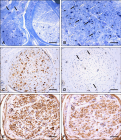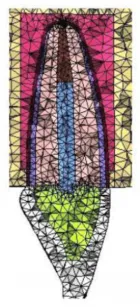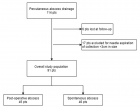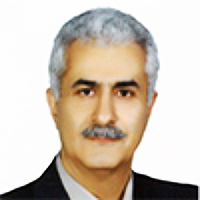Abstract
Research Article
Virulence Genes in Pseudomonas Aeruginosa Strains Isolated at Suez Canal University Hospitals with Respect to the Site of Infection and Antimicrobial Resistance
Nermine Elmaraghy*, Said Abbadi, Gehan Elhadidi, Asmaa Hashem and Asmaa Yousef
Published: 05 July, 2019 | Volume 2 - Issue 1 | Pages: 008-019
Background: Pseudomonas aeruginosa is one of the top five pathogens causing healthcare-associated infections. Biofilm formation is nowadays a major problem. Aim: The aim of this study was to examine the prevalence of virulence genes in clinical isolates of Pseudomonas aeruginosa at Suez Canal University Hospitals with respect to the site of infection and microbial resistance of the strains.
Materials and methods: A cross-sectional descriptive study was carried out on 47 Pseudomonas aeruginosa strains collected from hospitalized patients from December 2015 to August 2017. To detect biofilm formation, we used Tissue Culture Plate Method. The virulence genes (toxA, algD, nan1, pslA and pelA) were amplified using PCR technique.
Results: The highest sensitivity was to Imipenem and Ciprofloxacin (85.1% and 68.1% respectively).With respect to the virulence genes, toxA gene was detected in 45 isolates (95.7%), algD gene in 42 isolates (89.4%), pslA in 42 isolates (89.4%) %), pelA cted in 41 isolates (87.2%) and nan1gene was detected in 19 isolates (40.45%).
Conclusions and Recommendations: We conclude that there is relationship between virulence genes and biofilm formation in Pseudomonas aeruginosa. We recommend the expansion of work on a larger sample size in a longer period of time.
Read Full Article HTML DOI: 10.29328/journal.ijcmbt.1001006 Cite this Article Read Full Article PDF
Keywords:
Biofilm; Virulence genes; P. aeruginosa; Antimicrobial resistance; Egypt
References
- Askoura M, Mottawea W, Abujamel T, Taher I. Efflux pump inhibitors (EPIs) as new antimicrobial agents against Pseudomonas aeruginosa. Libyan J Med. 2011; 6: 5870. [PUBMED]
- Aly NY, Al-Mousa HH, Al Asar el SM. Nosocomial Infections in a Medical-Surgical Intensive Care Unit. Med Princ Pract. 2008; 17: 373-377. [PUBMED]
- Nasser S, Mabrouk A, Maher A. Colonization of burn wounds in Ain Shams University burn unit. Burns. 2003; 29: 229-233. [PUBMED]
- Falagas ME, Koletsi PK, Bliziotis IA. The diversity of definitions of multidrug-resistant (MDR) and pandrug-resistant (PDR) Acinetobacter baumannii and Pseudomonas aeruginosa. J. Med. Microbiol. 2006; 55: 1619–1629. [PUBMED]
- Hancock RE, Speert DP. Antibiotic resistance in Pseudomonas aeruginosa: Mechanisms and impact on treatment. Drug Resis 2000; 3: 247-255. [PUBMED]
- Mitov I, Strateva T, Markova B. Prevalence of virulence genes among bulgarian nosocomial and cystic fibrosis isolates of Pseudomonas aeruginosa. Braz J Microbiol. 2010; 41: 588–595. [PUBMED]
- Ryder C1, Byrd M, Wozniak DJ. Role of polysaccharides in Pseudomonas aeruginosa biofilm development. J Curr Opin Microbiol. 2007; 10: 644-648. [PUBMED]
- Solano C, Echeverz M, Lasa I. Biofilm dispersion and quorum sensing. J Curr Opin Microbiol. 2014; 18: 96-104. [PUBMED]
- Ghafoor A, Hay ID, Rehm BH. Role of exopolysaccharides in Pseudomonas aeruginosa biofilm formation and architecture. J Appl Environ Microbiol. 2011; 77: 5238–5246. [PUBMED]
- Rasamiravaka T, Labtani Q, Duez P, El Jaziri M. The Formation of Biofilms by Pseudomonas aeruginosa: A Review of the Natural and Synthetic Compounds Interfering with Control Mechanisms. J Bio Med Res Int. 2015; 759348: 17. [PUBMED]
- Govan J. Pseudomonas, Stenotrophomonas, Burkholderia. In: College J, Dugid J, Fraseer A, Marmion B (eds). Singapore: Churchill Livingstone. Mackie and McCartney. 14th ed. 1996; 23: 413-424.
- Janet A, Audrey N, Abbott A, Antonara S, Bobenchik A. CLSI AST News Update. J.CLSI Subcommittee on Antimicrobial Susceptibility Testing. 2017; 2: 1-17.
- Christensen G, Simpson W, Younger J, Baddour L, Barrett F. et al. Adherence of coagulase-negative staphylococci to plastic tissue culture plates: a quantitative model for the adherence of staphylococci to medical devices. J Cli Microbial. 1985; 22: 996-1006. [PUBMED]
- Al-Dahmoshi H. Genotypic and Phenotypic Investigation of Alginate Biofilm Formation among Pseudomonas Aeruginosa Isolated from Burn Victims in Babylon, Iraq. J Science J Microbiol. 2013.
- Maita P, Boonbumrung K. Association between biofilm formation of Pseudomonas aeruginosa clinical isolates versus antibiotic resistance and genes involved with biofilm. J Chem Pharm Res. 2014; 6: 1022-1028.
- Harrison F. Microbial ecology of the cystic fibrosis lung. J Microbiol. 2007; 153: 917–923. [PUBMED]
- Akhand S, Pettit R, Gardner T, Anderson G. New treatments in development for Pseudomonas aeruginosa infections in the lungs of individuals with cystic fibrosis. J Email Alerts. 2014; 71-78. [PUBMED]
- Gomez M, Neyfakh A. Genes involved in intrinsic antibiotic resistance of Acinetobacter baylyi. J Antimicrob Agents Chemother. 2006; 50: 3562–3567. [PUBMED]
- Pang Z, Raudonis R Glick BR, Lin TJ, Cheng Z. Antibiotic resistance in Pseudomonas aeruginosa: mechanisms and alternative therapeutic strategies. J Biotechnology Advances. 2019; 37: 177-192. [PUBMED]
- Mahmoud AB, Zahran WA, Hindawi GR, Labib A,Z Galal R. Prevalence of Multidrug-Resistant Pseudomonas aeruginosa in Patients with Nosocomial Infections at a University Hospital in Egypt, with Special Reference to Typing Methods. J Virol Microbiol. 2013; 290047.
- Wassef M, El Mahallawy H, Zafer MM, Ghaith D, Abdel Hamid R. Lab Based Surveillance of Multidrug Resistant Pseudomonas aeruginosa in Cairo University Hospitals, Egypt. J Microbiol Exp. 2015; 2: 00039.
- Khan HA, BaigFK, Mehboob R. Nosocomial infections: Epidemiology, prevention, control and surveillance. Asian Pac J Trop Biomed. 2017; 7: 478-482. [PUBMED]
- Ikeno T, Fukuda K, Ogawa M, Honda M, Tanabe T, et al. Small and rough colony Pseudomonas aeruginosa with elevated biofilm formation ability isolated in hospitalized patients. J Microbiol Immunol. 2007; 51: 929-938. [PUBMED]
- Gad GF, El-Domany RA, Zaki S, Ashour HM. Characterization of Pseudomonas Aeruginosa Isolated from Clinical and Environmental Samples in Minia, Egypt: Prevalence, Antibiogram and Resistance Mechanisms. J. Antimicrob Agents Chemother. 2007; 60: 1010– 1017. [PUBMED]
- Pourshafie M, Mousavi S, Parzadeh M. Ribotyping and increasing trend of antibiotic resistance of Pseudomonas aeruginosa isolated in Iran. Braz J Microbiol. 2007; 38: 355.
- Abaza AF, El Shazly SA, Selim HSA, Aly GSA. Metallo-Beta-Lactamase Producing Pseudomonas aeruginosa in a Healthcare Setting in Alexandria, Egypt. Polish J Microbiol. 2017; 66: 297–308. [PUBMED]
- Kennedy AM, Elward AM, Fraser VJ. Survey of knowledge, beliefs, and practices of neonatal intensive care unit healthcare workers regarding nosocomial infections, central venous catheter care, and hand hygiene. J Infect Control Hosp Epidemiol. 2004; 25: 747-752. [PUBMED]
- Pathmanathan SG, Samat NA, Mohamed R. Antimicrobial Susceptibility of Clinical Isolates of Pseudomonas aeruginosa from a Malaysian Hospital. Malays J of Med Sci. 2019; 16: 146-152. [PUBMED]
- Taherzadeh S, Soheili F, Deilami Z, Salimizand H, Heidari A. Incidence of nosocomial infections caused by Pseudomonas aeruginosa among burn patients at Kurdistan province. Glo Res J Microbiol. 2011; 2: 35-38.
- Japoni A, Farshad S, Alborzi A. Pseudomonas aeruginosa: Burn Infection, Treatment and Antibacterial Resistance. Iran Red Crescent Med J. 2009; 11: 244-253.
- Church D, Elsayed S, Reid O, Winston B, Lindsay R. Burn wound infections. J Clin Microbiol Rev. 2006; 19: 403-434. [PUBMED]
- Allegranzi B1, Pittet D. Preventing infections acquired during health care delivery. J Lancet. 2008; 372: 1719-1720. [PUBMED]
- National Nosocomial Infections Surveillance (NNIS) System Report, data summary from January 1992 through June 2004, issued October 2004. Am J Infect Control. 2004; 32: 470-485. [PUBMED]
- Oni A, Nwaorgu O, Bakare R, Ogunkunle M, Toki R. The Discharging Ears in Adults in Ibadan, Nigeria; Causative Agents and Antimicrobial Sensitivity Pattern. Afr J Clin Exp Microbiol. 2002; 3: 3-5.
- Jacoby GA. AmpC β Lactamases. J Clin Microbiol Rev. 2009; 22: 161-182. [PUBMED]
- Van Eldere J. Multicentre surveillance of Pseudomonas aeruginosa susceptibility patterns in nosocomial infections. J Antimicrob Chemother. 2003; 51: 347-352. [PUBMED]
- Delcour AH. Outer Membrane Permeability and Antibiotic Resistance. Biochim Biophys Acta. 2010; 1794: 808–816. [PUBMED]
- Zeng ZR, Wang WP1, Huang M1, Shi LN1, Wang Y, et al. Mechanisms of carbapenem resistance in cephalosporin-susceptible Pseudomonas aeruginosa in China. J Diagn Microbiol Infect Dis. 2014; 78: 268-270. [PUBMED]
- Meletis G, Vavatsi N, Exindari M, Protonotariou E, Sianou E, et al. Accumulation of carbapenem resistance mechanisms in VIM-2-producing Pseudomonas aeruginosa under selective pressure. J Eur J Clin Microbiol Infect Dis. 2014; 33: 253-258. [PUBMED]
- Ünan D, Gnseren F. The Resistance of P. aeruginosa Strains Isolated from Nosocomial Infections against Various Antibiotics. J Micobiol Bult. 2000; 34: 255-260.
- Paramythiotou E, Lucet JC, Timsit JF, Vanjak D, Paugam-Burtz C, et al. Acquisition of Multidrug-Resistant Pseudomonas aeruginosa in Patients in Intensive Care Units: Role of Antibiotics with Antipseudomonal Activity. J Clin Infect Dis. 2004; 38: 670-677. [PUBMED]
- Hisham A, Fathy M, Eman M. Combating Pseudomonas aeruginosa Biofilms by Potential Biofilm Inhibitors. J Asian J Res Pharm Sci. 2012; 2: 66-72.
- Abd El Galil K, Abdel Ghani S, Sebak M, El-Naggar W. Detection of biofilm genes among clinical isolates of Pseudomonas aeruginosa recovered from some Egyptian hospitals. J Microbiol. 2013; 36: 86-101.
- Kwon AS, Park GC, Ryu SY, Lim DH, Lim DY, et al. Higher biofilm formation in multidrug-resistant clinical isolates of Staphylococcus aureus. J. Int. J. Antimicrob. Agents. 2008; 32: 68–72. [PUBMED]
- Reiter KC, DA Silva Paim TG, DE Oliveira CF, D'Azevedo PA. High biofilm production by invasive multiresistant staphylococci. APMIS. 2011; 119: 776–781. [PUBMED]
- Ghanbarzadeh Corehtash Z1, Khorshidi A1, Firoozeh F1, Akbari H2, Mahmoudi Aznaveh A. Biofilm Formation and Virulence Factors among Pseudomonas aeruginosa Isolated From Burn Patients. Jundishapur. J Microbiol. 2015; 8: e22345. [PUBMED]
- Qin X, Emerson J, Stapp J, Stapp L, Abe P, et al. Use of real-time PCR with multiple targets to identify Pseudomonas aeruginosa and other non-fermenting gram-negative bacilli from patients with cystic fibrosis. J Clin Microbiol. 2003; 4: 4312-4317. [PUBMED]
- Lavenir R, Jocktane D, Laurent F, Nazaret S, Cournoyer B. Improved reliability of Pseudomons aeruginosa PCR detection by the use of the specific ecfx gene target. J Microbiol Methods. 2007; 70: 20-29. [PUBMED]
- Nikbin VS, Aslani MM, Sharafi Z, Hashemipour M, Shahcheraghi F, et al. Molecular identification and detection of virulence genes among Pseudomonas aeruginosa isolated from different infectious origins. J Iran J Microbiol. 2012; 4: 118-123. [PUBMED]
- Sharma I, Choudhury D. Detection of PelA Gene in P. aeruginosa from Clinical Samples Using Polymerase Chain Reaction with Reference to Biofilm Production. J Indian J Med Res. 2015; 4: 119-121.
- Strateva T, Yordanov D. Pseudomonas aeruginosa – a phenomenon of bacterial resistance. J Med Microbiol. 2009; 58: 1133–1148. [PUBMED]
- Ra'oof W. Distribution of a algD, lasB, pilB and nan1 genes among MDR clinical isolates of pseudomonas aeruginosa in respect to site of infection. J Tikrit Med J. 2011; 17: 148- 160.
- Lanotte P, Watt S, Mereghetti L, Dartiguelongue N, Rastegar-Lari A, et al. Genetic features of Pseudomonas aeruginosa isolates from cystic fibrosis patients compared with those of isolates from other origins. J Med Microbiol. 2004; 153: 73–81. [PUBMED]
- Colvin KM, Gordon VD, Murakami K, Borlee BR, Wozniak DJ, et al. The pel polysaccharide can serve a structural and protective role in the biofilm matrix of Pseudomonas aeruginosa,. PLoS Pathogens. 2011; 7: e1001264. [PUBMED]
- Sabharwal N, Dhall S, Chhibber S, Harjai K. Molecular detection of virulence genes as markers in Pseudomonas aeruginosa isolated from urinary tract infections. Int J Mol Epidemiol Genet. 2014; 5: 125-134. [PUBMED]
- Sharma M, Pathak S, Srivastava P. Prevalence and antibiogram of Extended Spectrum β-Lactamase producing gram negative bacilli and further molecular characterization of ESBL producing Escherichia coli and Klebsiella spp. J Clin Diagn Res. 2013; 7: 2173–2177.
Similar Articles
-
Virulence Genes in Pseudomonas Aeruginosa Strains Isolated at Suez Canal University Hospitals with Respect to the Site of Infection and Antimicrobial ResistanceNermine Elmaraghy*,Said Abbadi,Gehan Elhadidi,Asmaa Hashem,Asmaa Yousef. Virulence Genes in Pseudomonas Aeruginosa Strains Isolated at Suez Canal University Hospitals with Respect to the Site of Infection and Antimicrobial Resistance. . 2019 doi: 10.29328/journal.ijcmbt.1001006; 2: 008-019
-
Knowledge, perception and practices of Suez Canal University students regarding Hepatitis C Virus infection risk and means of preventionNermine Elmaraghy*,Hesham El-Sayed,Sohair Mehanna,Adel Hassan,Mahmoud Sheded,Maha Abdel-Fattah,Samar Elfiky,Nehal Lotfy,Zeinab Khadr. Knowledge, perception and practices of Suez Canal University students regarding Hepatitis C Virus infection risk and means of prevention. . 2019 doi: 10.29328/journal.ijcmbt.1001007; 2: 020-027
Recently Viewed
-
Cytokine intoxication as a model of cell apoptosis and predict of schizophrenia - like affective disordersElena Viktorovna Drozdova*. Cytokine intoxication as a model of cell apoptosis and predict of schizophrenia - like affective disorders. Arch Asthma Allergy Immunol. 2021: doi: 10.29328/journal.aaai.1001028; 5: 038-040
-
Snow white: an allergic girl?Oreste Vittore Brenna*. Snow white: an allergic girl?. Arch Asthma Allergy Immunol. 2022: doi: 10.29328/journal.aaai.1001029; 6: 001-002
-
Impact of Latex Sensitization on Asthma and Rhinitis Progression: A Study at Abidjan-Cocody University Hospital - Côte d’Ivoire (Progression of Asthma and Rhinitis related to Latex Sensitization)Dasse Sery Romuald*, KL Siransy, N Koffi, RO Yeboah, EK Nguessan, HA Adou, VP Goran-Kouacou, AU Assi, JY Seri, S Moussa, D Oura, CL Memel, H Koya, E Atoukoula. Impact of Latex Sensitization on Asthma and Rhinitis Progression: A Study at Abidjan-Cocody University Hospital - Côte d’Ivoire (Progression of Asthma and Rhinitis related to Latex Sensitization). Arch Asthma Allergy Immunol. 2024: doi: 10.29328/journal.aaai.1001035; 8: 007-012
-
Gentian Violet Modulates Cytokines Levels in Mice Spleen toward an Anti-inflammatory ProfileSalam Jbeili, Mohamad Rima, Abdul Rahman Annous, Abdo Ibrahim Berro, Ziad Fajloun, Marc Karam*. Gentian Violet Modulates Cytokines Levels in Mice Spleen toward an Anti-inflammatory Profile. Arch Asthma Allergy Immunol. 2024: doi: 10.29328/journal.aaai.1001034; 8: 001-006
-
Effectiveness of levocetirizine in treating allergic rhinitis while retaining work efficiencyDabholkar Yogesh, Shah Tanush, Rathod Roheet, Paspulate Akhila, Veligandla Krishna Chaitanya, Rathod Rahul, Devesh Kumar Joshi*, Kotak Bhavesh. Effectiveness of levocetirizine in treating allergic rhinitis while retaining work efficiency. Arch Asthma Allergy Immunol. 2023: doi: 10.29328/journal.aaai.1001031; 7: 005-011
Most Viewed
-
Impact of Latex Sensitization on Asthma and Rhinitis Progression: A Study at Abidjan-Cocody University Hospital - Côte d’Ivoire (Progression of Asthma and Rhinitis related to Latex Sensitization)Dasse Sery Romuald*, KL Siransy, N Koffi, RO Yeboah, EK Nguessan, HA Adou, VP Goran-Kouacou, AU Assi, JY Seri, S Moussa, D Oura, CL Memel, H Koya, E Atoukoula. Impact of Latex Sensitization on Asthma and Rhinitis Progression: A Study at Abidjan-Cocody University Hospital - Côte d’Ivoire (Progression of Asthma and Rhinitis related to Latex Sensitization). Arch Asthma Allergy Immunol. 2024 doi: 10.29328/journal.aaai.1001035; 8: 007-012
-
Causal Link between Human Blood Metabolites and Asthma: An Investigation Using Mendelian RandomizationYong-Qing Zhu, Xiao-Yan Meng, Jing-Hua Yang*. Causal Link between Human Blood Metabolites and Asthma: An Investigation Using Mendelian Randomization. Arch Asthma Allergy Immunol. 2023 doi: 10.29328/journal.aaai.1001032; 7: 012-022
-
An algorithm to safely manage oral food challenge in an office-based setting for children with multiple food allergiesNathalie Cottel,Aïcha Dieme,Véronique Orcel,Yannick Chantran,Mélisande Bourgoin-Heck,Jocelyne Just. An algorithm to safely manage oral food challenge in an office-based setting for children with multiple food allergies. Arch Asthma Allergy Immunol. 2021 doi: 10.29328/journal.aaai.1001027; 5: 030-037
-
Snow white: an allergic girl?Oreste Vittore Brenna*. Snow white: an allergic girl?. Arch Asthma Allergy Immunol. 2022 doi: 10.29328/journal.aaai.1001029; 6: 001-002
-
Cytokine intoxication as a model of cell apoptosis and predict of schizophrenia - like affective disordersElena Viktorovna Drozdova*. Cytokine intoxication as a model of cell apoptosis and predict of schizophrenia - like affective disorders. Arch Asthma Allergy Immunol. 2021 doi: 10.29328/journal.aaai.1001028; 5: 038-040

If you are already a member of our network and need to keep track of any developments regarding a question you have already submitted, click "take me to my Query."



















































































































































